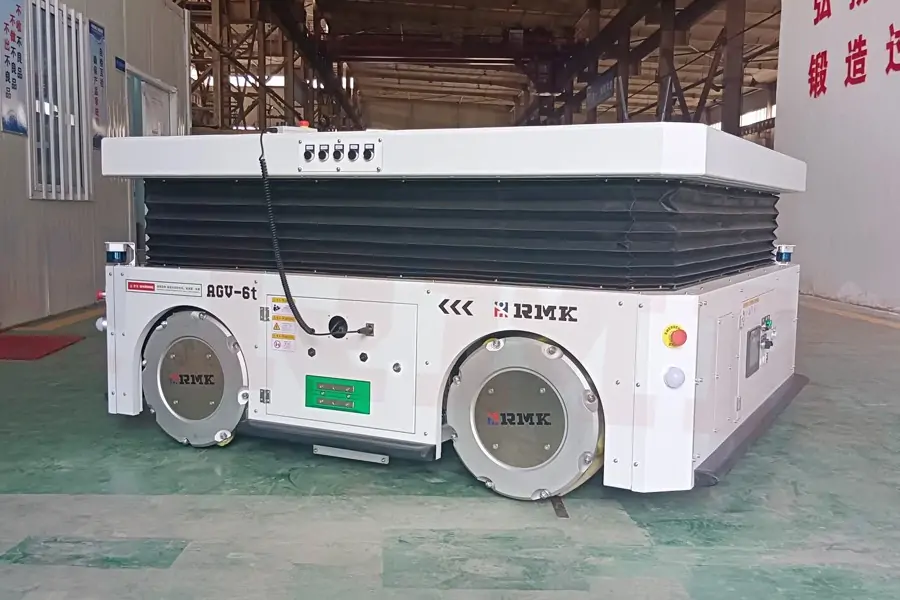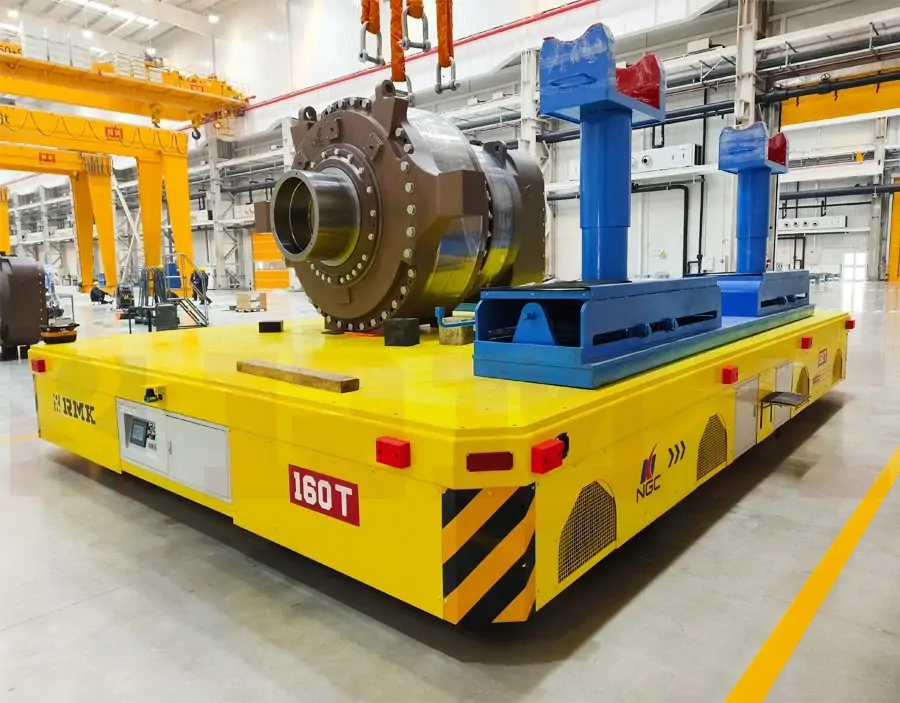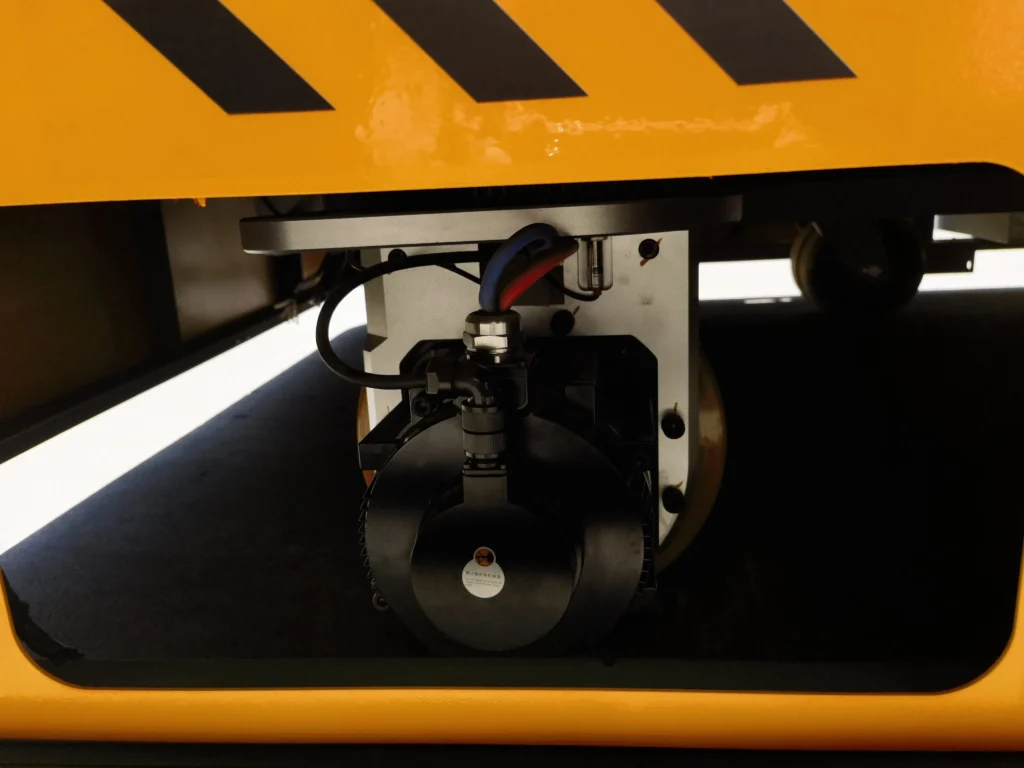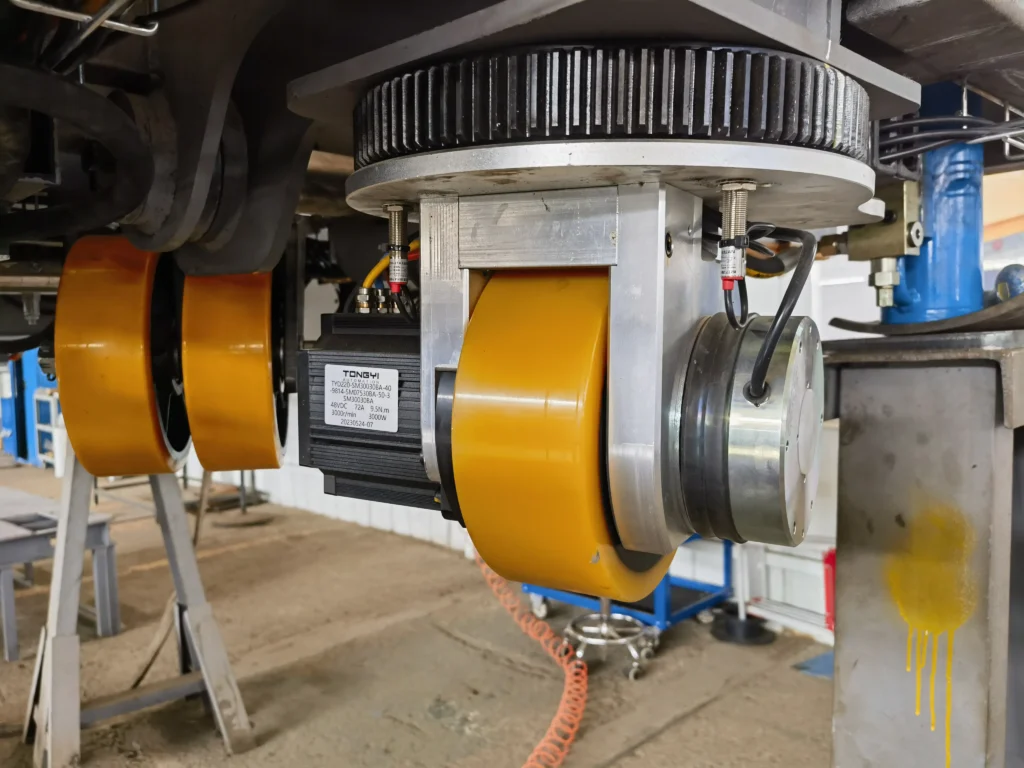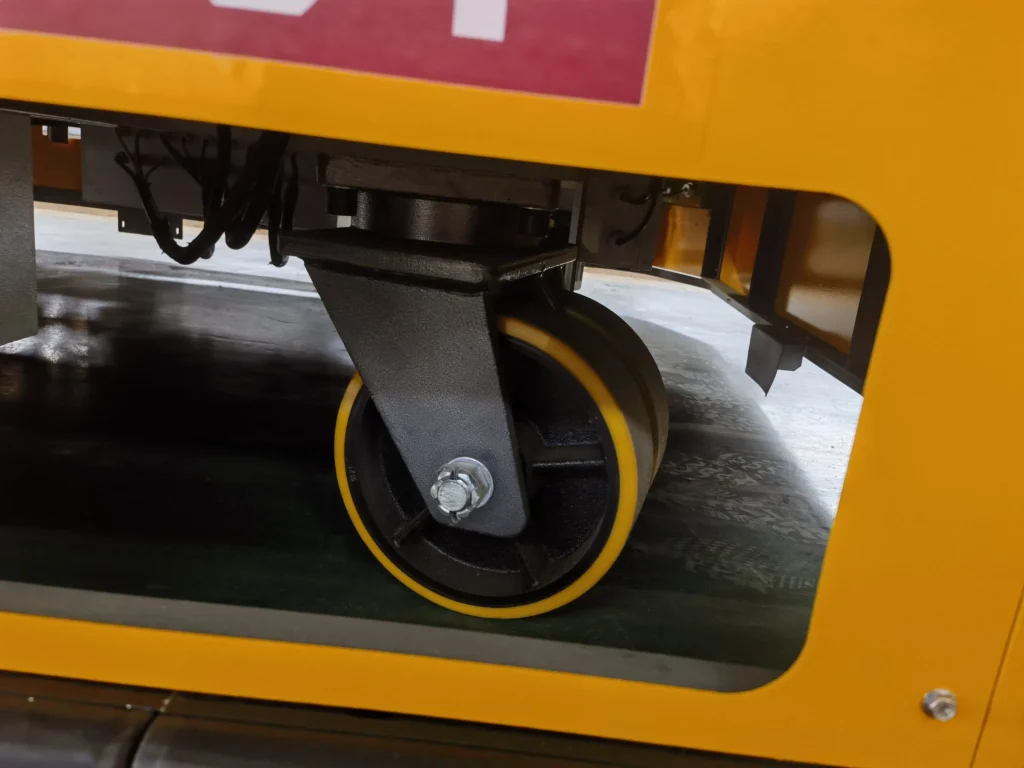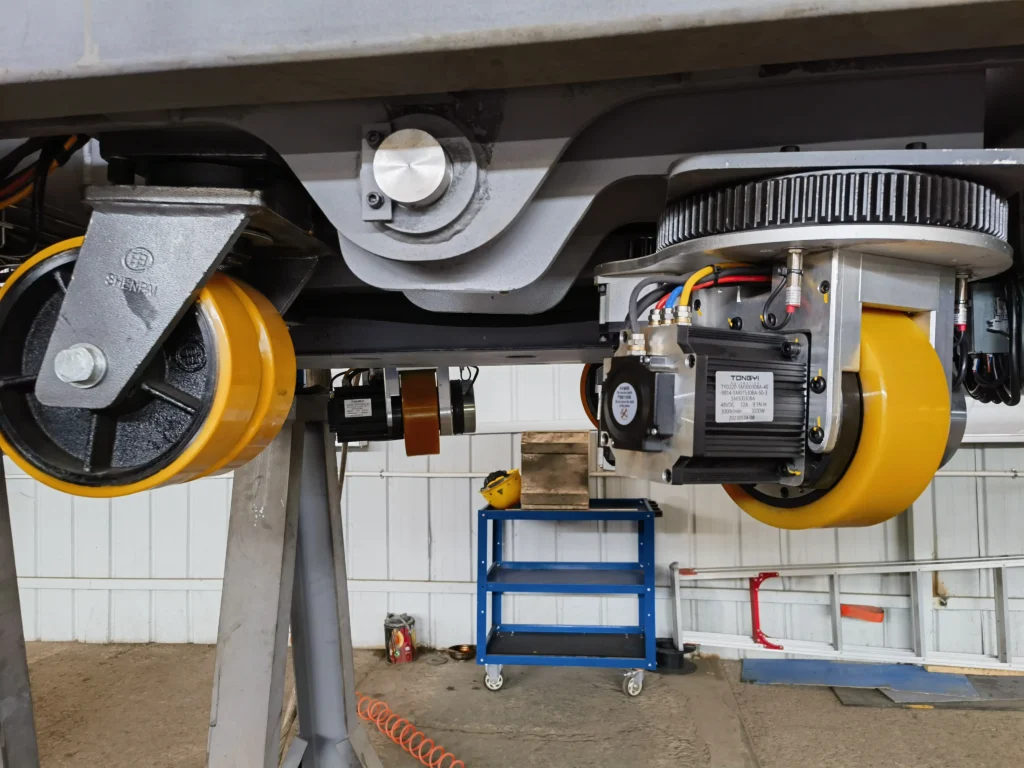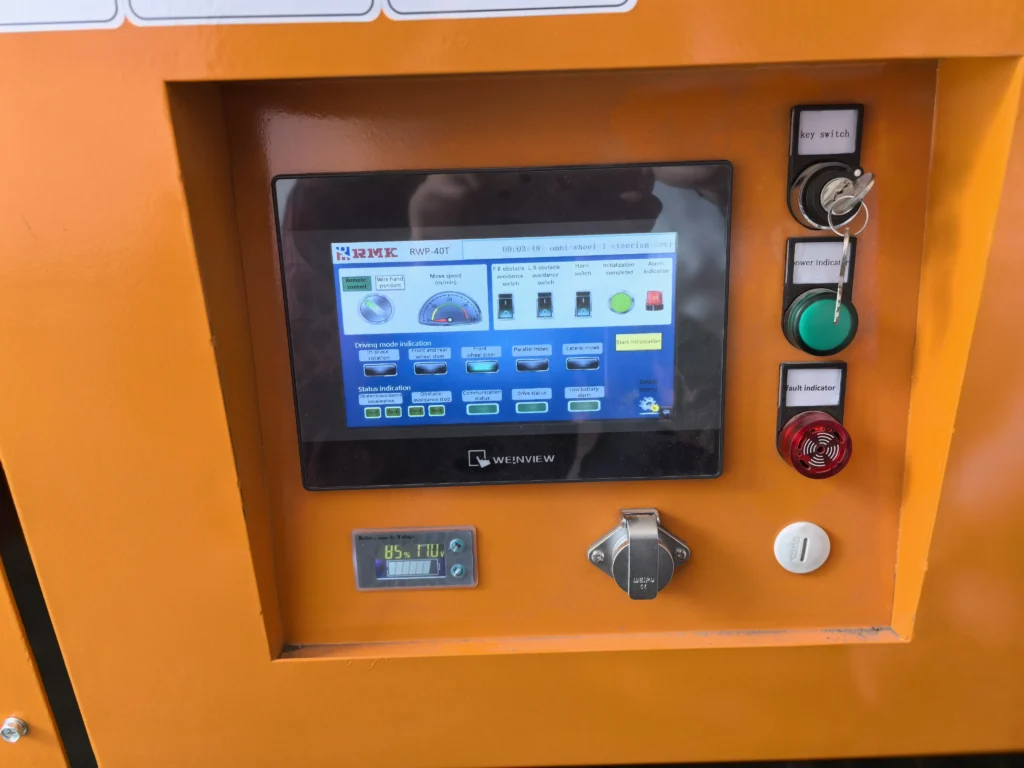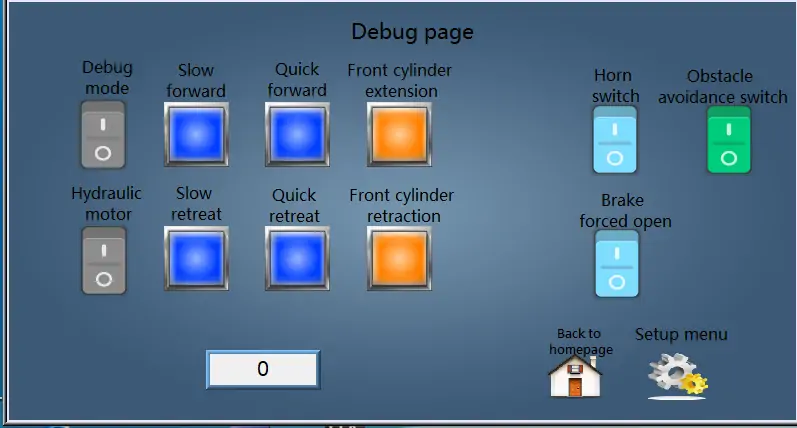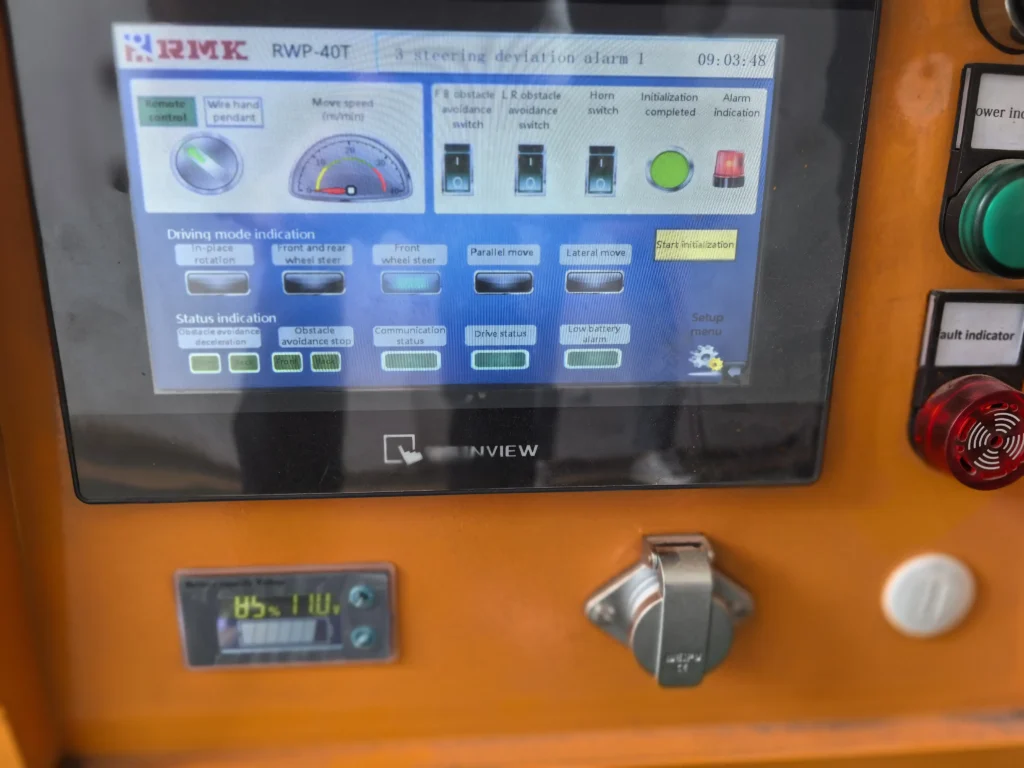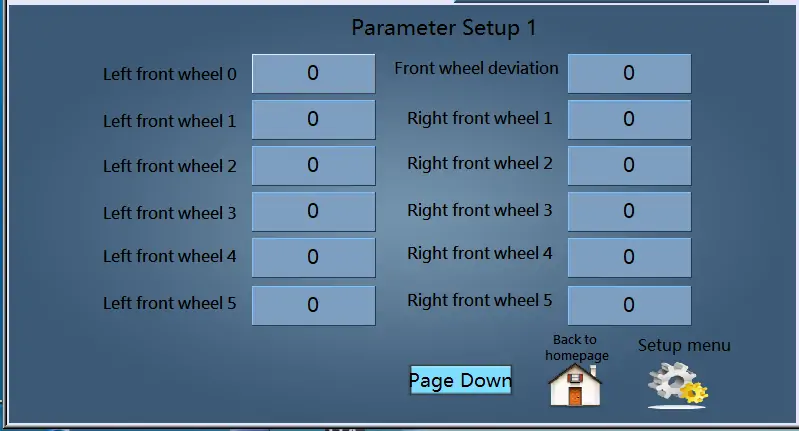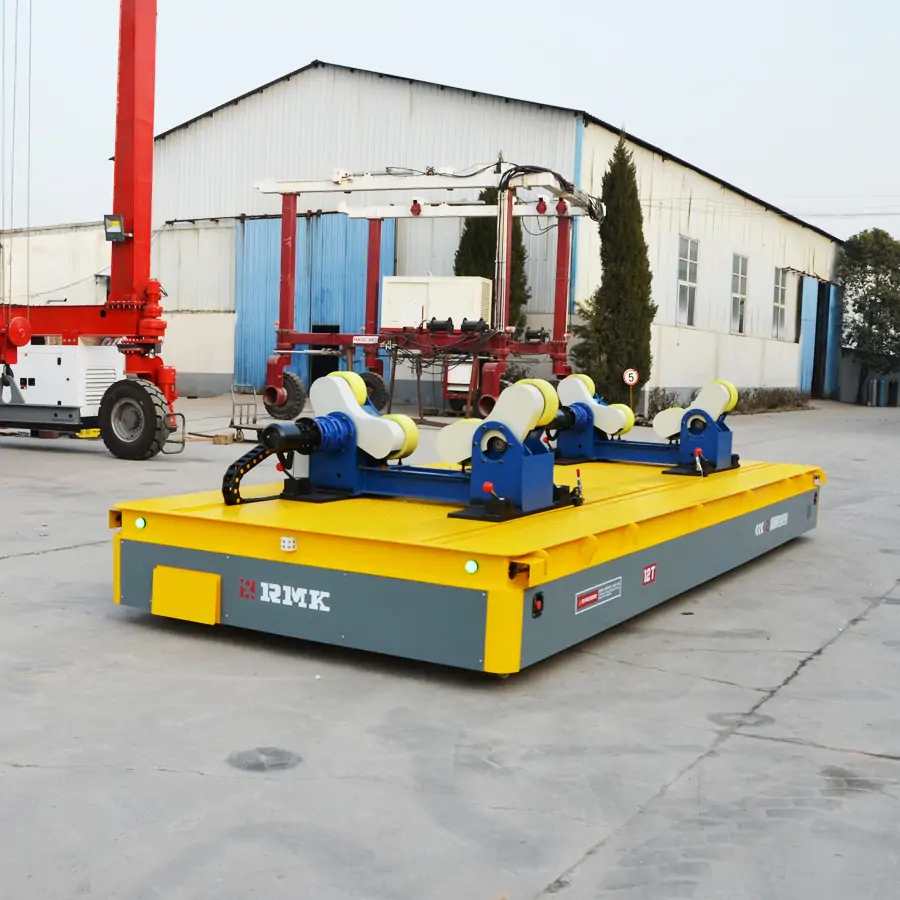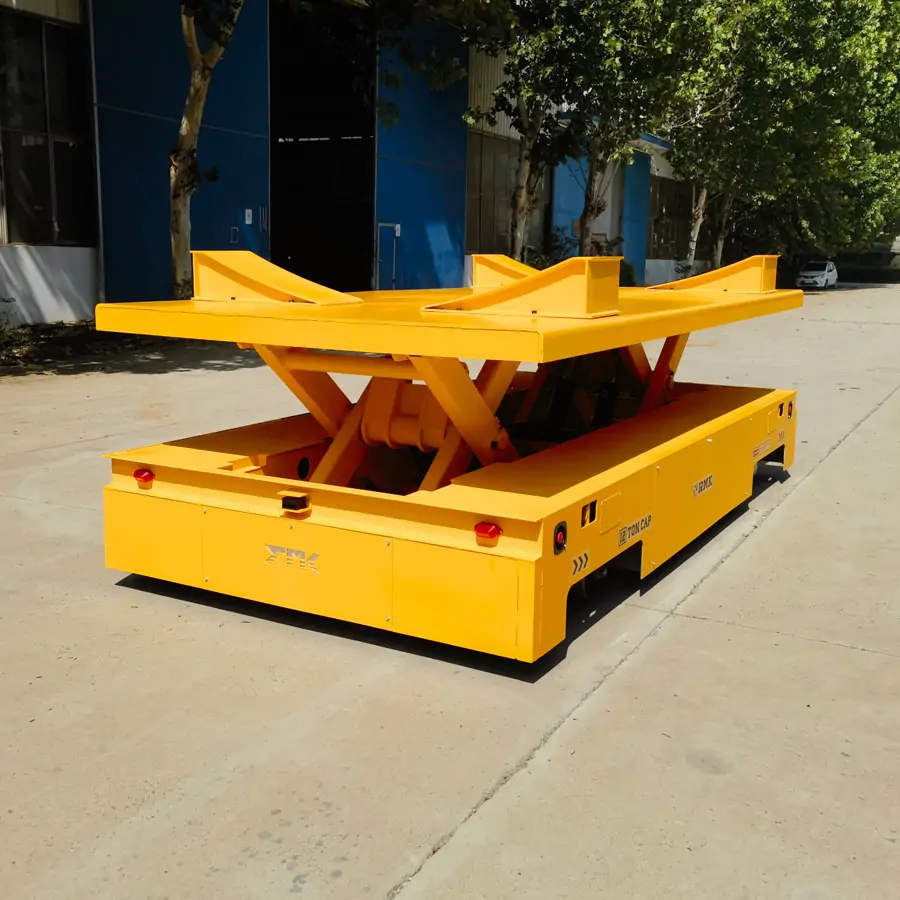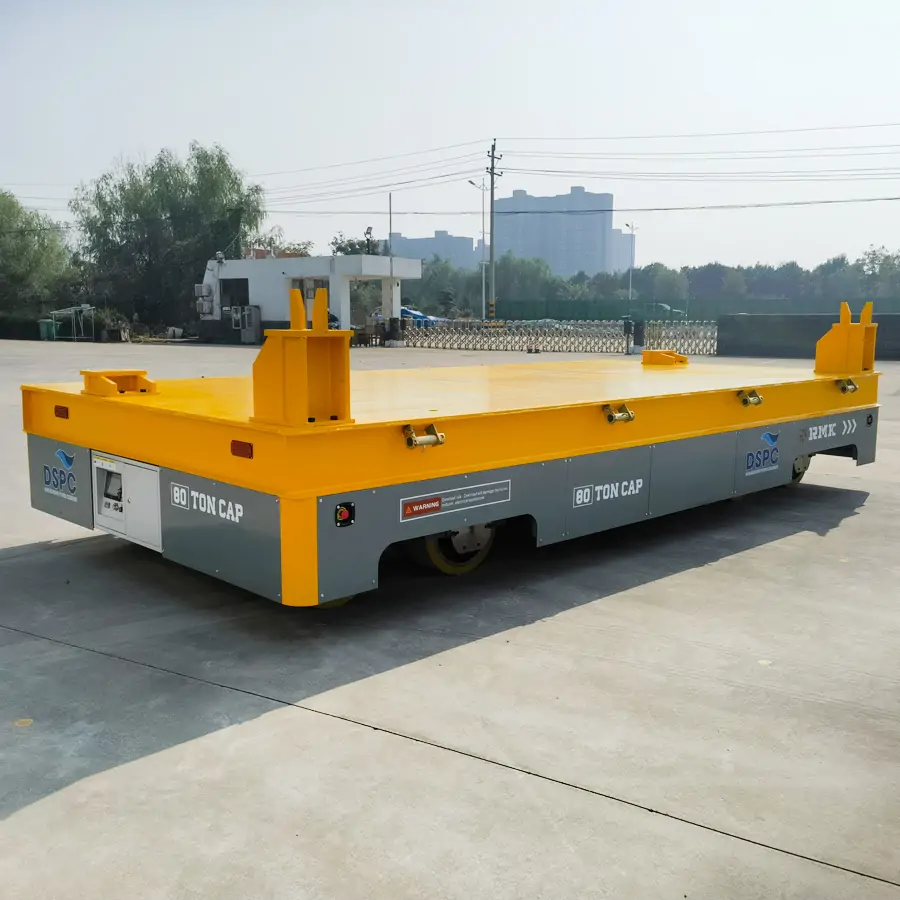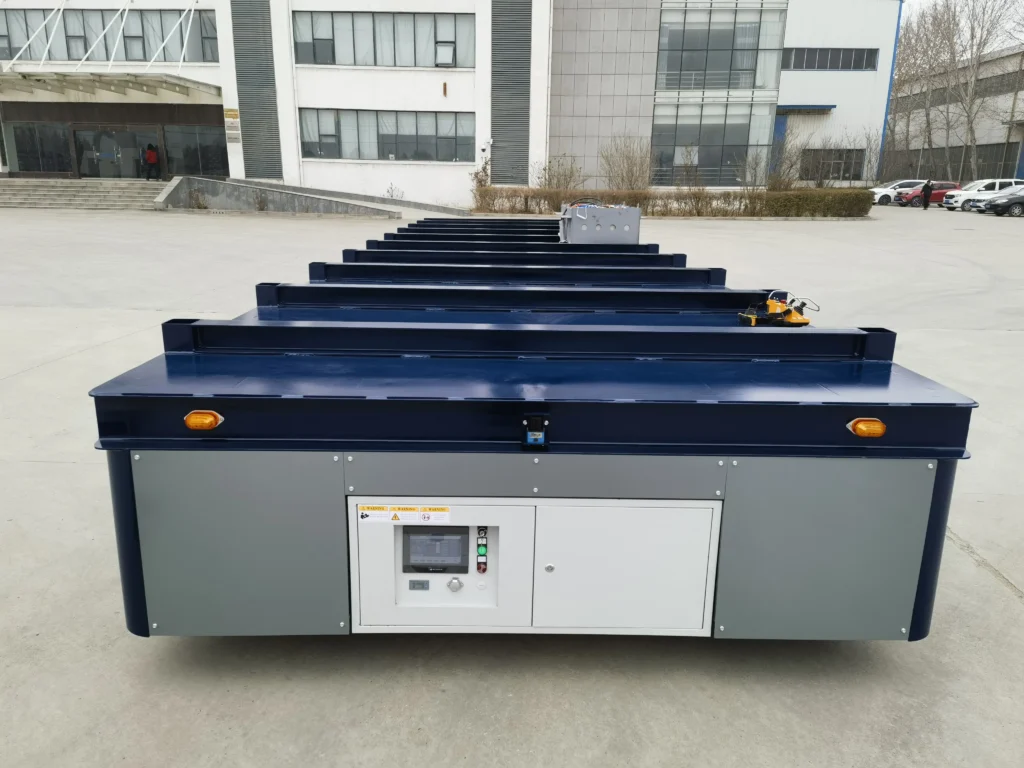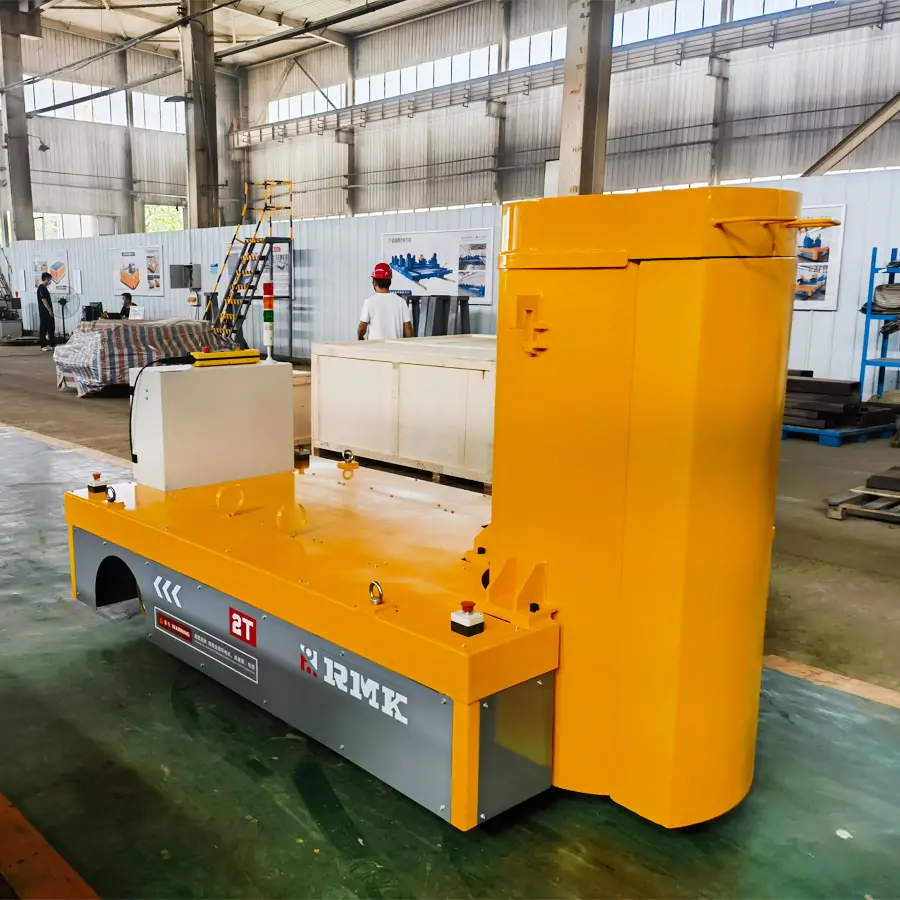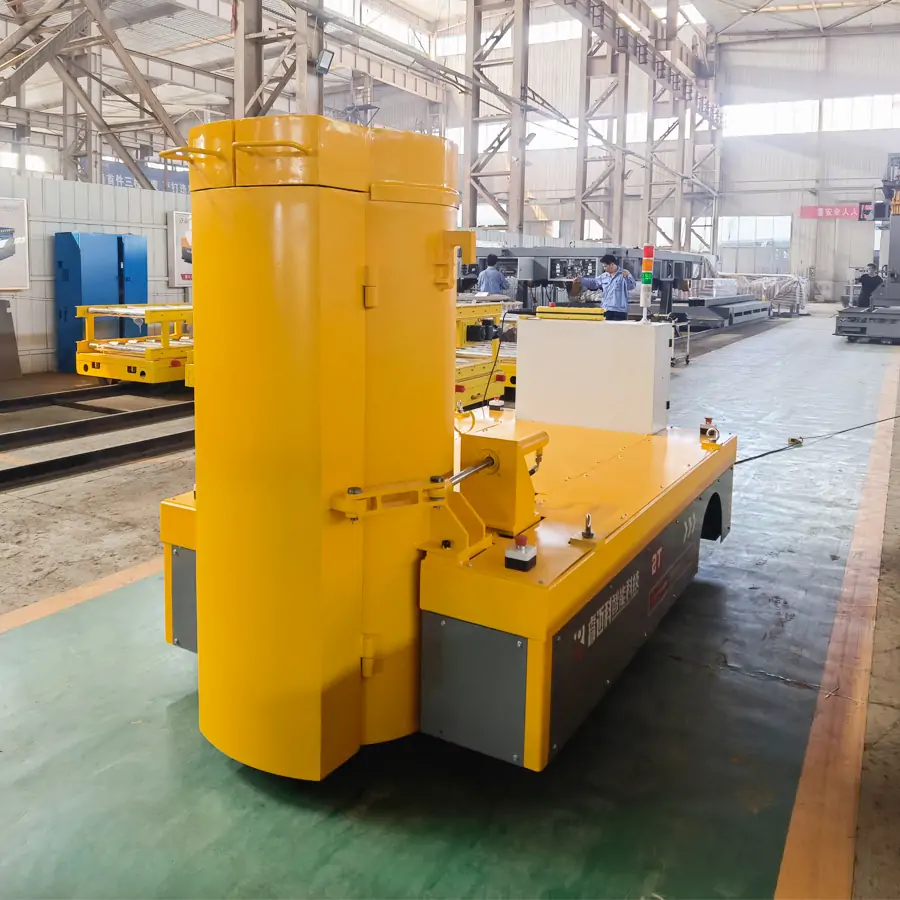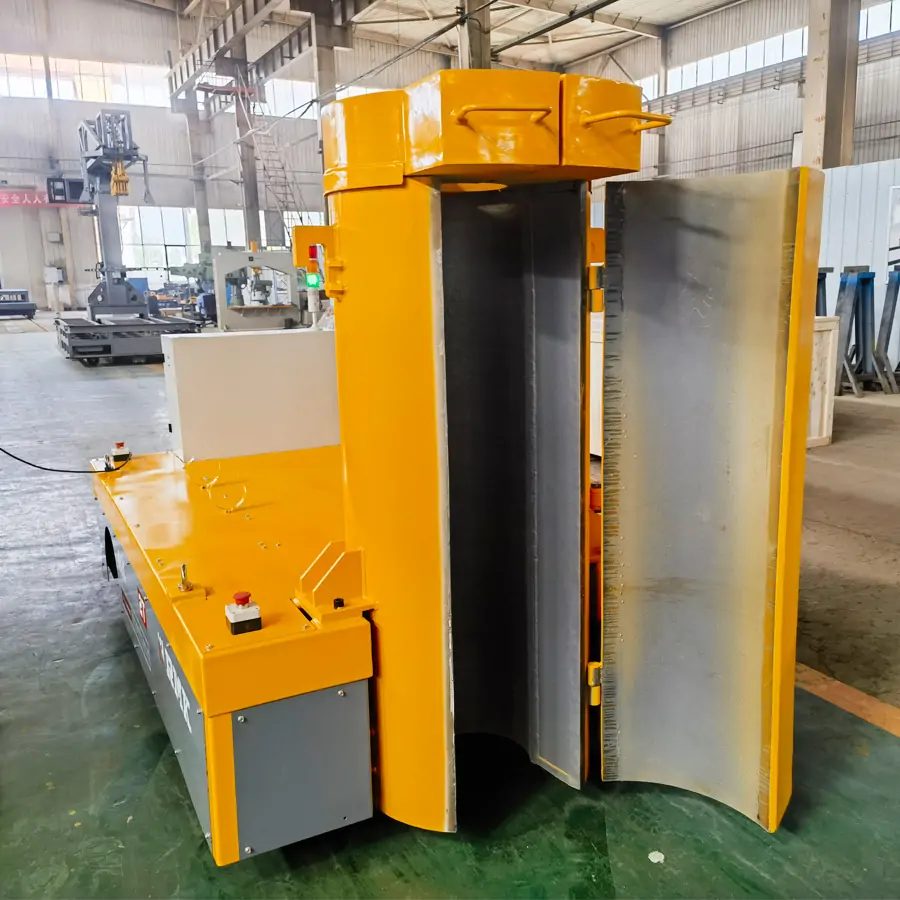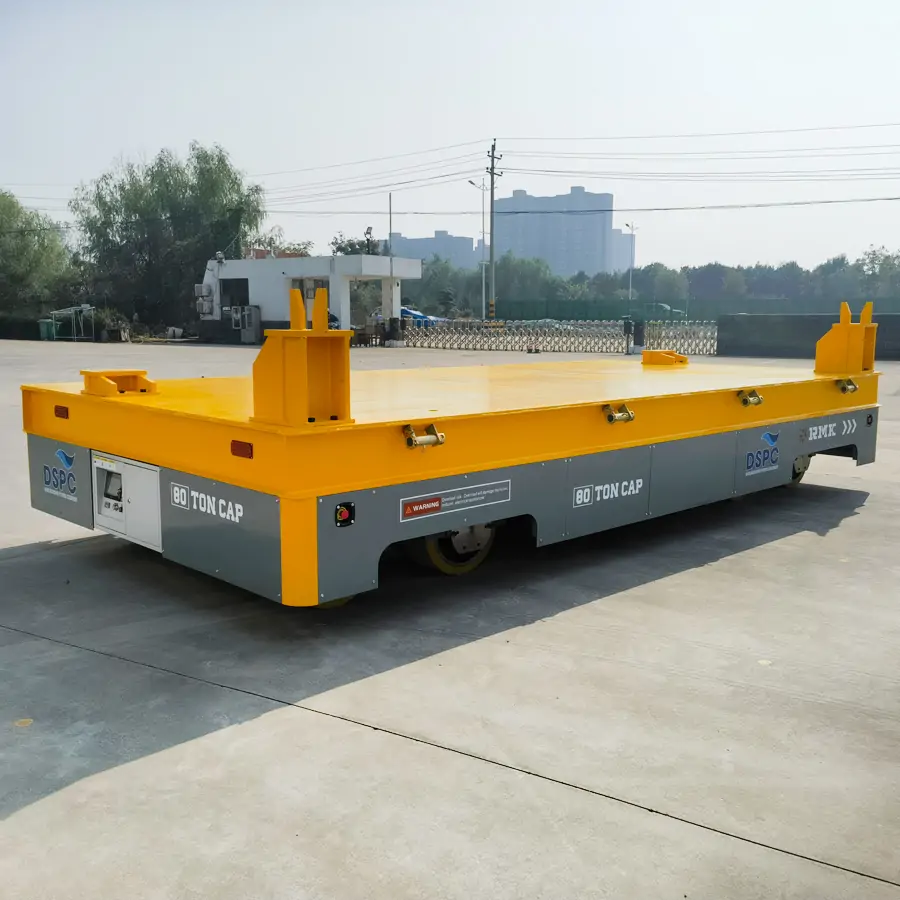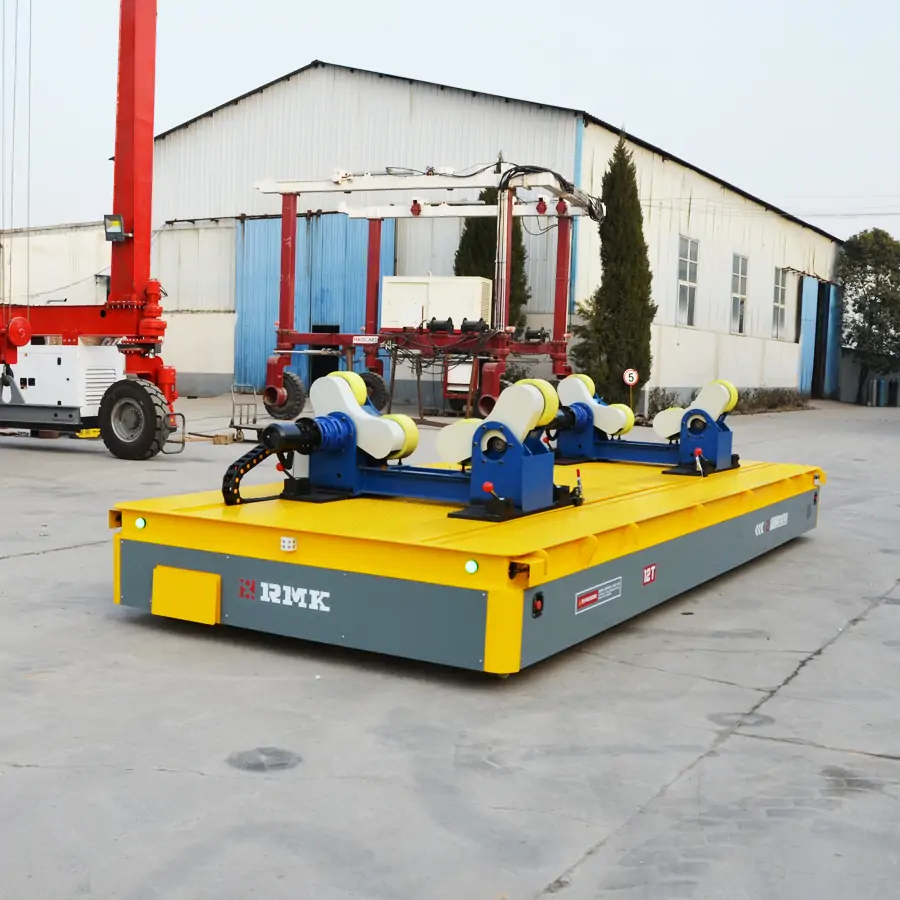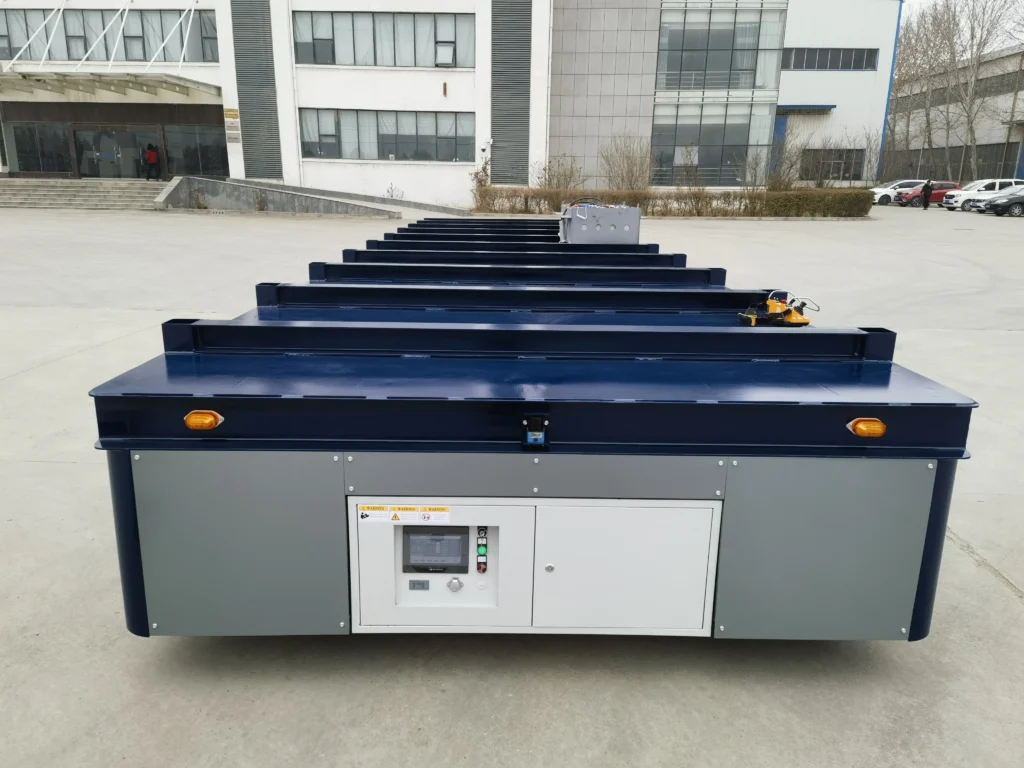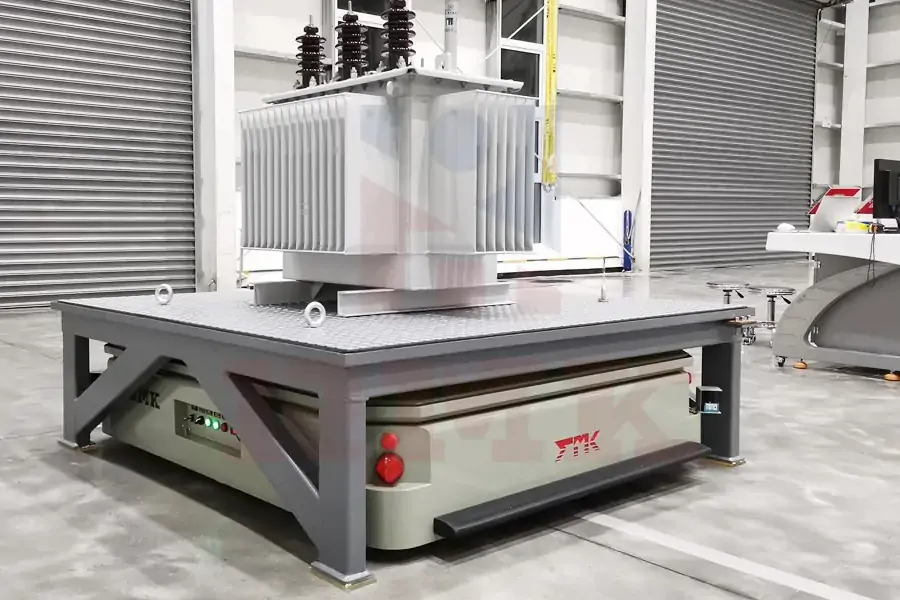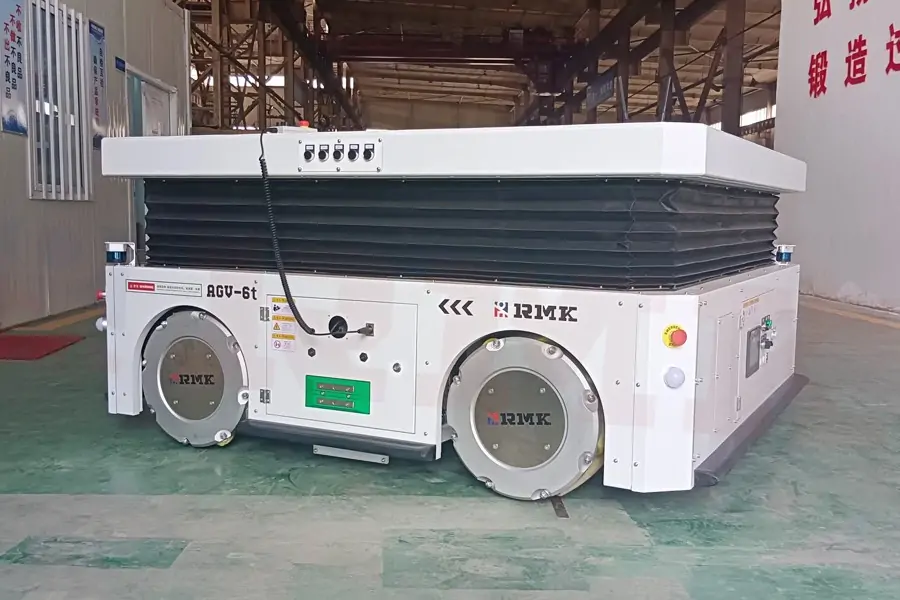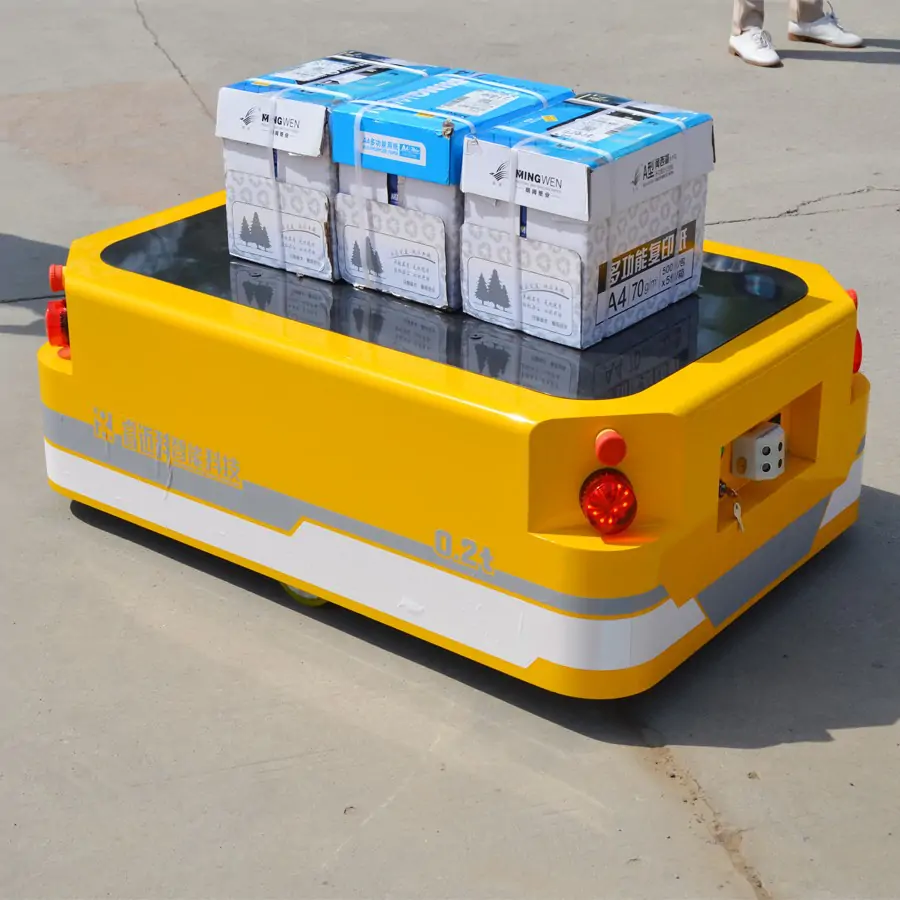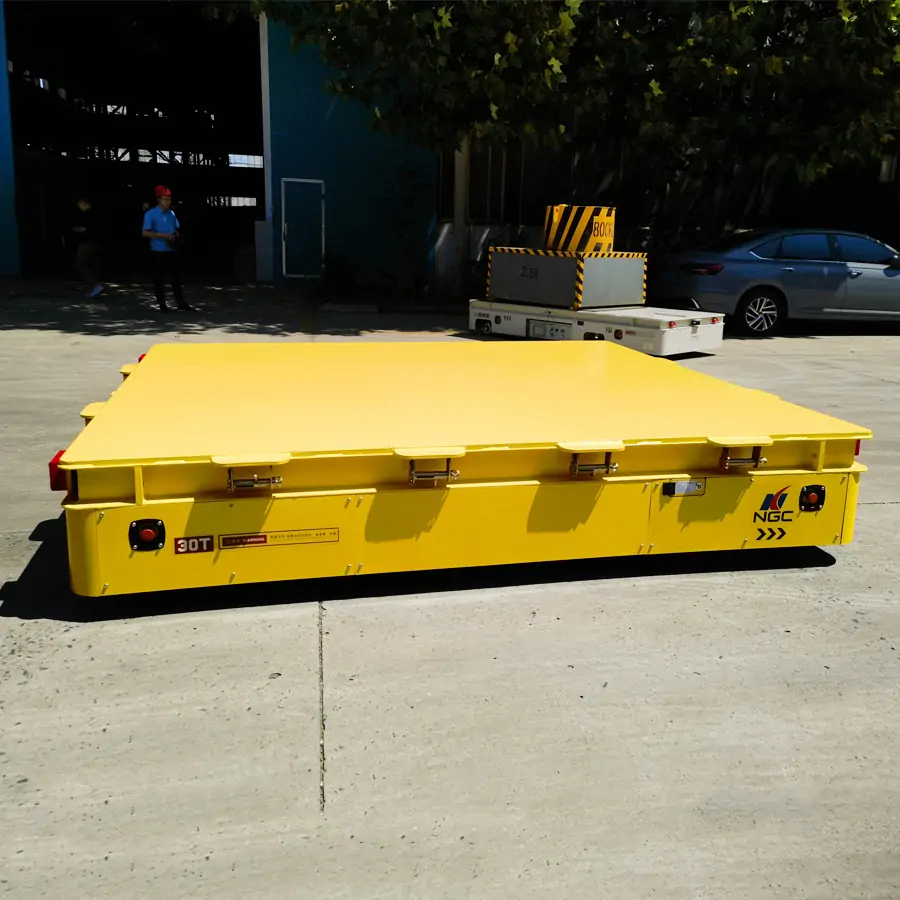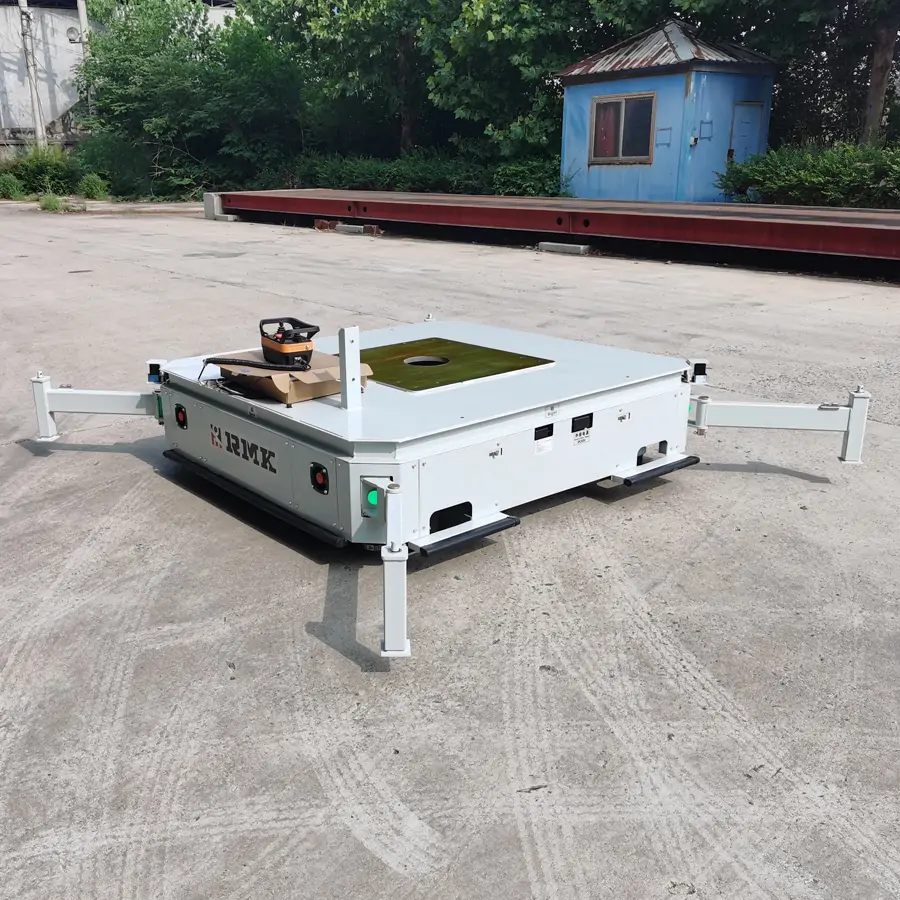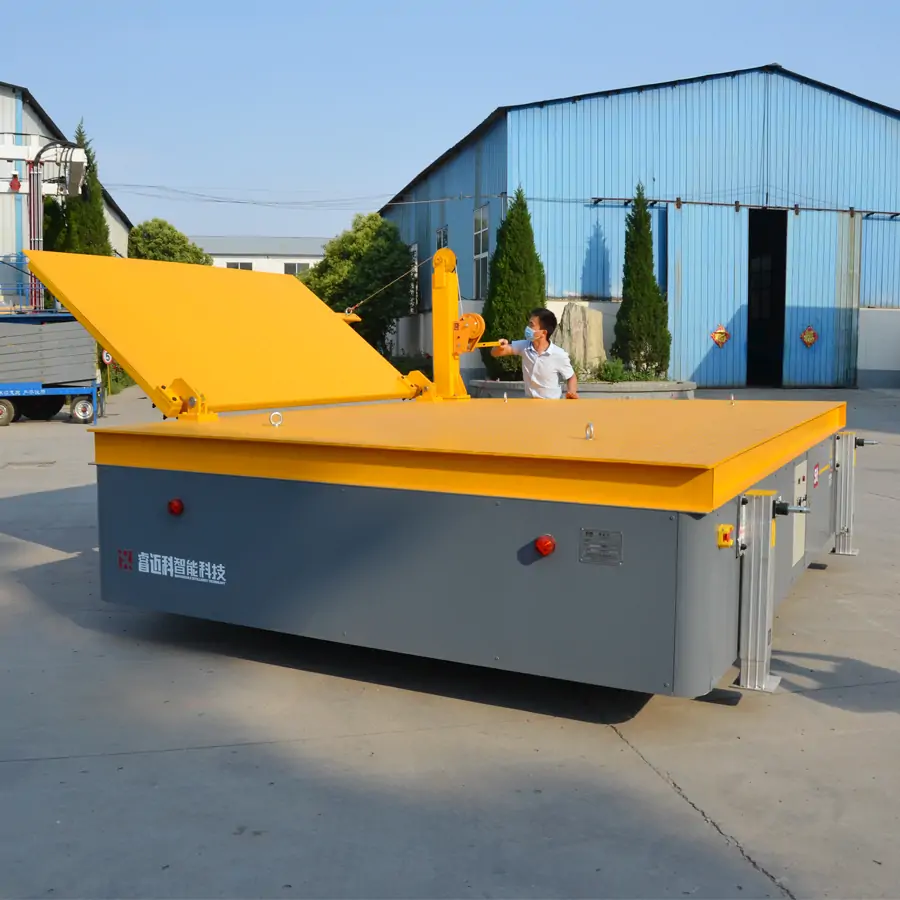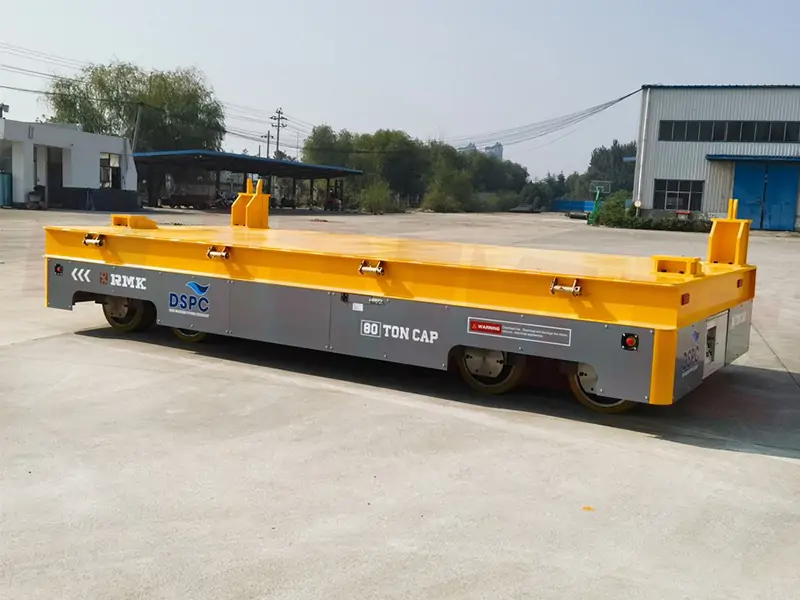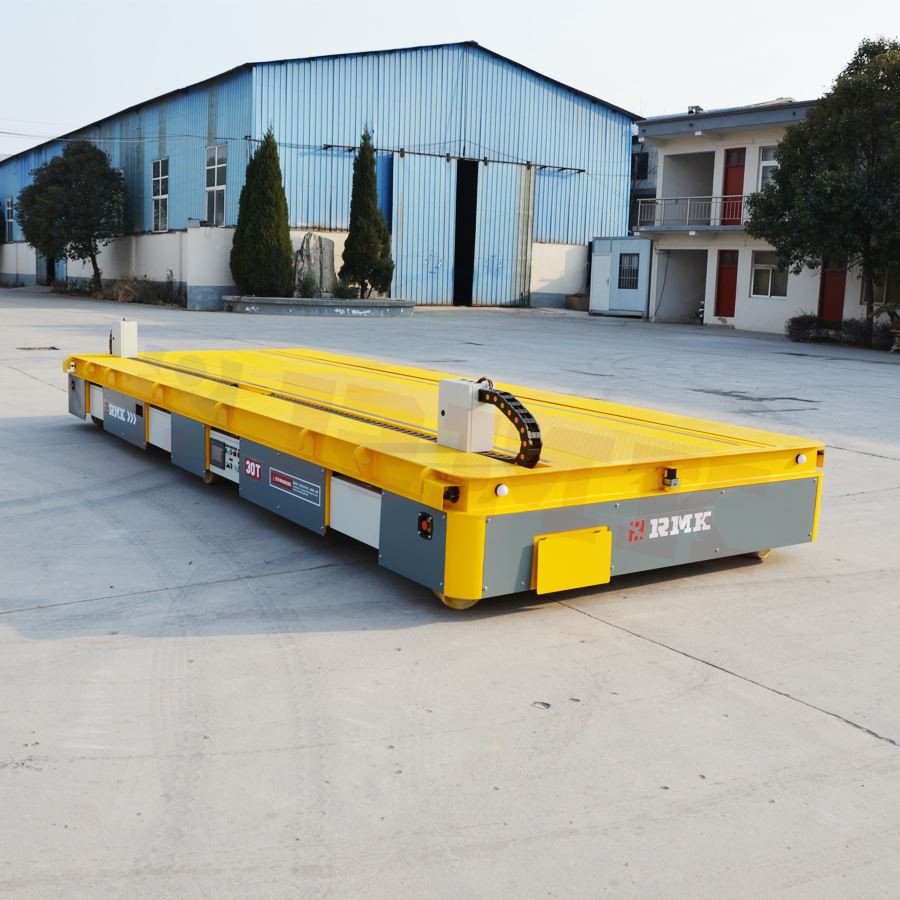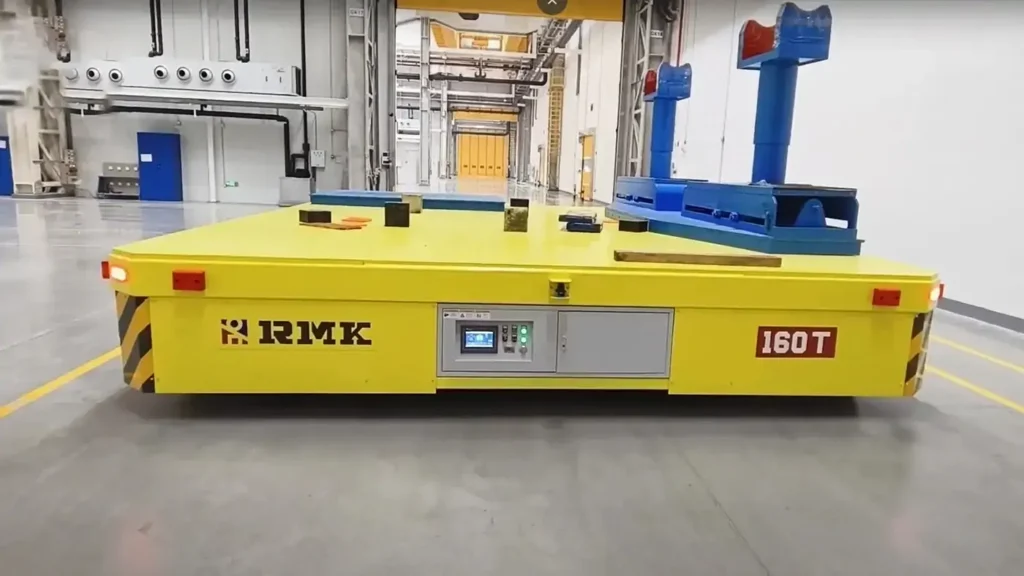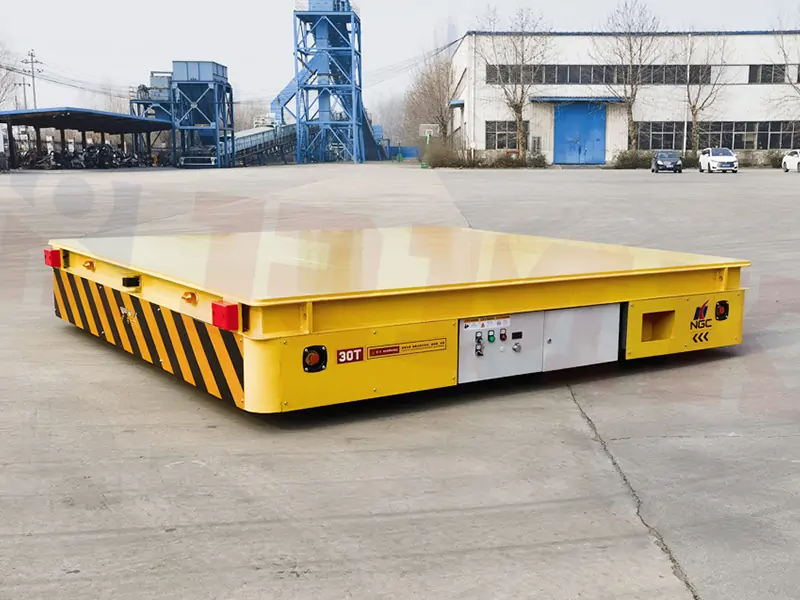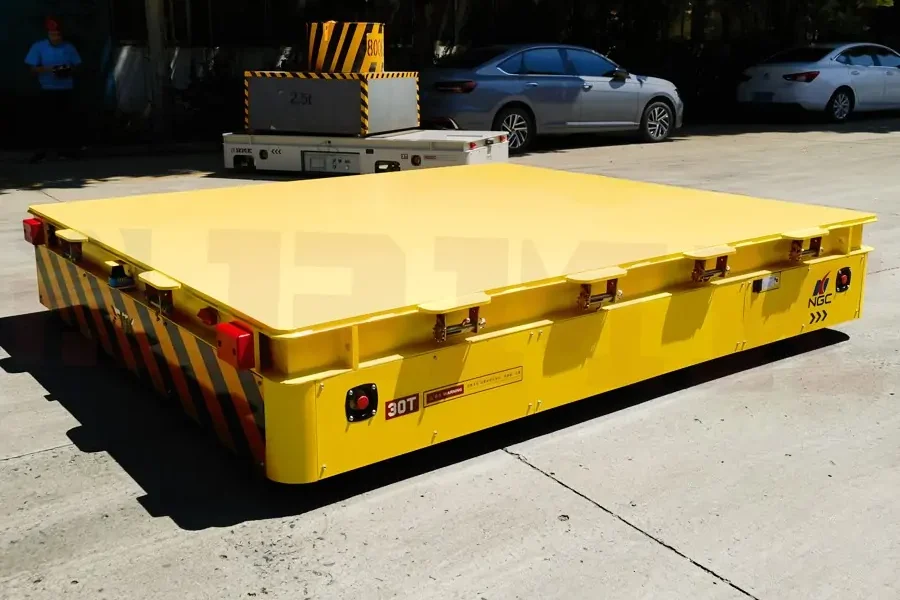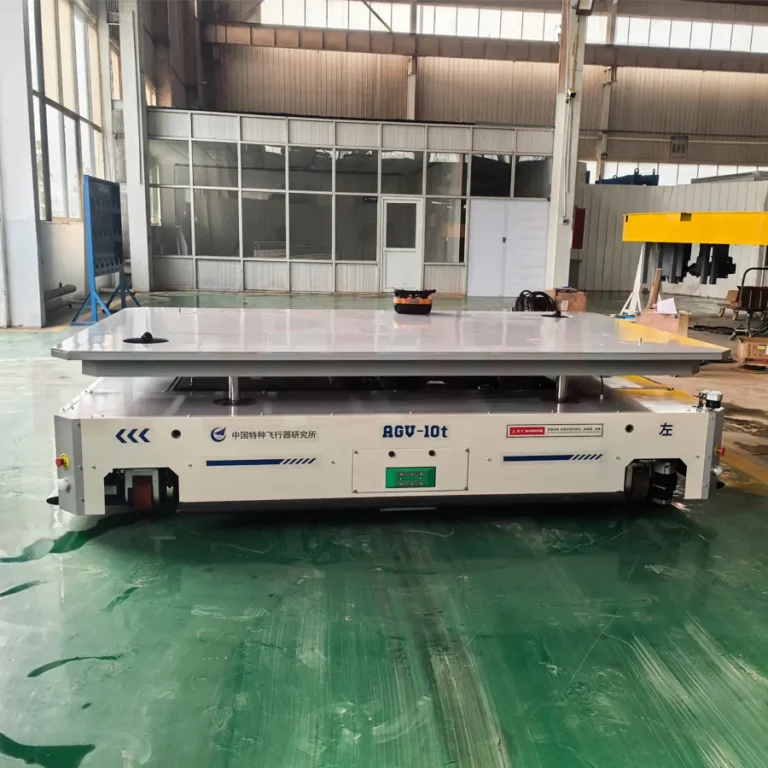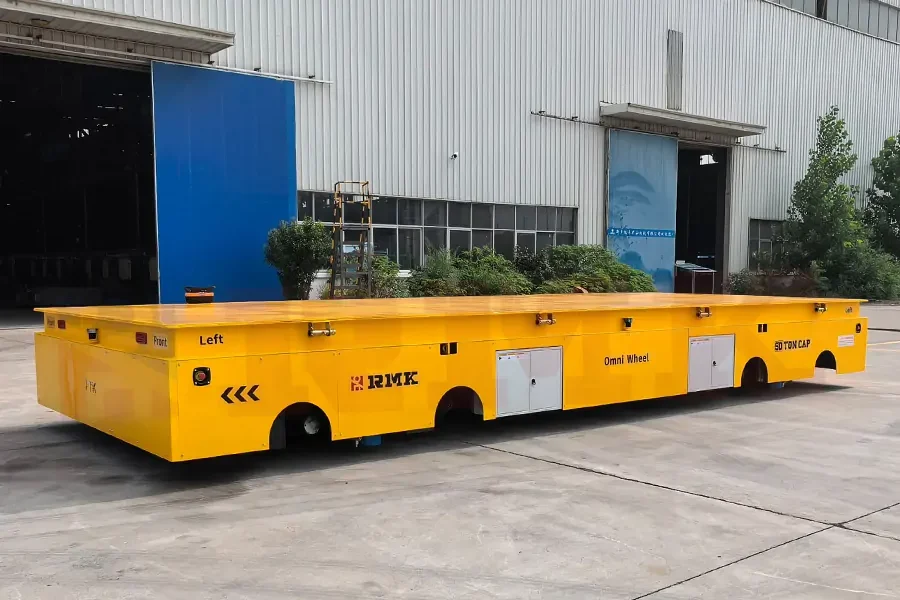The Omnidirectional Mover Cart is a specialized mobile robot or material handling device whose core feature is the ability to move in any direction. In simple terms, it can not only move forward and backward but also sideways and rotate 360 degrees in place. Its introduction has significantly addressed the issue of maneuvering in narrow factory spaces, and different customized types of omnidirectional mover carts have also resolved material handling challenges in various working conditions and levels of complexity.
It is widely used in smart warehousing and logistics, aerospace, automotive assembly lines, service robots, research, and education for large-scale material handling and transfer tasks in narrow and complex spaces. Now that we understand what this device is, let’s take a closer look at how omnidirectional carts work.
How omnidirectional carts work.
From the above, we have learned what an omnidirectional mover cart is. Now let’s take a look at how it works. Its working principle can be divided into three parts: the core component AGV Drive Unit, the control system, and custom accessories.
Core Component: AGV Drive Unit
This is a component that is currently the most economical and efficient option available. It primarily integrates two motors: a drive motor (responsible for rotating the wheels) and a steering servo motor (responsible for changing the direction of the wheels).
Its primary operating principle
- The steering servo motor can precisely control the wheels to point in any angle within a plane.
- The drive motor then controls the wheels to move forward, backward, or stop in that direction.
- By coordinating the direction and speed of all AGV Drive Units, the forces generated by all wheels can be directed toward the same direction, working together to move the platform, thereby achieving the material handling and transfer functions of an omnidirectional mover cart.
Control system:
Since each AGV Drive Unit is an independent system, the number of AGV Drive Units equipped on each omnidirectional mover cart varies depending on the load and type of cargo being transported. Typically, there are 4–12 AGV Drive Units, with custom production based on customer scenario requirements.
The control system is an embedded computer or high-performance microcontroller. Its primary function is to unify the direction of all AGV Drive Units. It issues commands to them, enabling them to collaborate and complete tasks.
Steps:
- Input commands:
- Remote control signals: The operator issues commands such as “move forward,” “move left,” or “rotate clockwise” via a remote control.
- Navigation system: The vehicle uses laser radar, visual sensors, or QR codes to perceive its own position and map, autonomously plans a path, and calculates the movement commands required to achieve that path.
- Algorithm calculation: Upon receiving a directional command, the control system uses an inverse kinematics algorithm to calculate the speed and direction each wheel should have.
- Motor execution: The “brain” sends the calculated commands to the motor drivers of each wheel, which precisely control the speed and steering angle of each motor.
Custom accessories:
Now that we understand their basic workflow, many existing solutions may not fully meet our needs. We offer additional customization services.
Omnidirectional Mover Carts Customization Options
| Customization Category | Specific Options | Common Configurations |
| Dimensions & Load | Platform Size, Load Capacity | Custom L/W/H, Rated Load |
| Body Material | Main Structure Material | Stainless Steel, Carbon Steel, Aluminum Alloy, Engineering Plastics |
| Core Functions | Lifting System, Fixing Devices | Hydraulic Lifting, Guardrails, Tie-downs, Custom Jigs |
| Running System | Wheel Type & Layout | PU Wheels, Nylon Wheels, Swivel Casters, Rigid Casters, Brakes |
| Safety & Marking | Safety Features, Appearance | Bumpers, Warning Lights, LOGOS, Colors, ID Numbers |
The above are our commonly customized options. If you have any other customization needs, please feel free to contact us. We will have professional designers provide you with more tailored solutions.
After understanding the working principle of omnidirectional mover carts, let’s explore their types and application scenarios.
Types and applications of omnidirectional mover carts
Explosion-proof omnidirectional mover cart: A specialized vehicle designed for hazardous environments with flammable or explosive gases or dust, eliminating any potential energy sources that could trigger an explosion. Commonly used in petrochemical plants, aerospace facilities, military ammunition depots, and pharmaceutical factories.
Heavy-duty omnidirectional mover cart: Engineering vehicles used for transporting loads weighing 10–500 tons. Their key features include multi-wheel configurations (8 wheels, 12 wheels, or more) with distributed drive systems, high-strength vehicle structures, and high-torque motors to achieve exceptional load-bearing capacity and precise control. They are commonly used in heavy equipment manufacturing, aerospace, shipbuilding, and the power industry.
Logistics and warehousing AGV/AMR: Intelligent robots integrating navigation (such as laser SLAM, vision, and QR codes), sensing, and scheduling systems to achieve fully automated material handling and information management. Commonly used in e-commerce and retail warehousing, smart factories, and automotive assembly.
Cold chain omnidirectional mover cart: A vehicle type specially designed for low-temperature refrigeration environments, with batteries, electronic components, tires, and lubrication systems made of low-temperature resistant materials and technologies to ensure stable and reliable operation in extreme environments. Commonly used in the semiconductor industry, panel display industry, precision instrument assembly, and aerospace.
Non-standard customized omnidirectional platform: This is not a standard product category but a highly customized solution developed based on the standard omnidirectional mobile platform, deeply integrating modules such as robotic arms, vision systems, and specialized tooling according to the customer’s unique production processes and requirements.
Conclusion:
Through the above content, we have learned about the working principles, types, and application scenarios of omnidirectional mover carts. They are indispensable important handling equipment in industrial logistics and will become a key solution for more companies in addressing handling challenges. We are a Chinese manufacturer specializing in customized transfer carts. If you have any handling-related issues, please contact us immediately, and we will provide you with the latest solutions.

